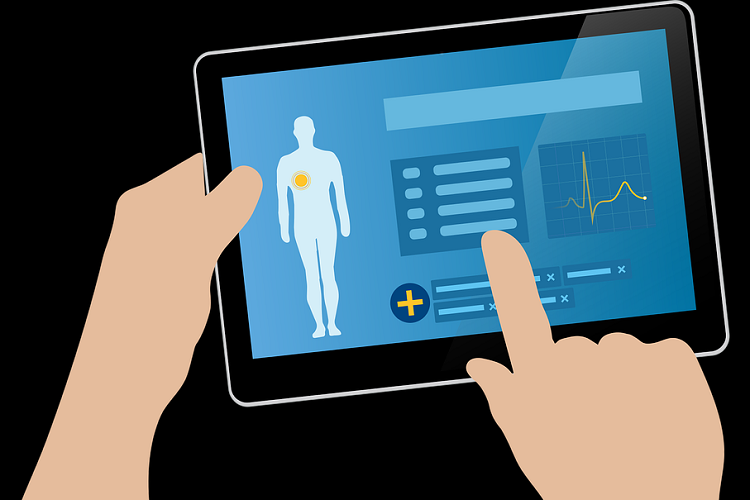Over the recent past, the area of medicine has enhanced more improvement of patient treatment services. Similarly, the healthcare industry is progressing through utilization of varying numbers of technology systems so that there shall be enhanced, quality and efficient patient care services. One of the critical elements that form part of this change is patient registry software. This article stresses on the indispensability of patient registry software to enhance the effectiveness of treatment procedures.
What is Patient Registry Software?

Patient registry software is special software that is used to collect, store, process, and distribute data on patients with special diseases or health conditions. It may be used to compile and analyze several types of information such as demographic, medical, diagnostic and therapeutic, as well as outcome data to facilitate smooth delivery of quality health services to patients.
However, patient registries are not the same as electronic health or medical records through which full patient clinical data could be kept. Nonetheless, patient registries are oriented at a specific population that is a patient or clients who have a particular disease state or condition, and as such, the caregivers get a mechanism to familiarize themselves with other parameters of this target population of patients.
Why Patient Registry Software is Pivotal?
Patient registry software has played a crucial role in healthcare providers as well as researchers in overall patient care and in the overall patient treatment outcome. There are several reasons why patient registry software is so important, some of which are explained below:
1. Positive effects on patient care and the outcome
Patient registry software is a tool that serves up relevant data to healthcare providers about the patients they manage delivering more personalized, targeted, and effective care. Such tracking can help patient caretakers to notice characteristics and tendencies that may be difficult to detect on a single visit and then handle them correspondingly.
For instance, patient registry applications allow doctors and other healers of patients to evaluate those patients who may be likely to experience certain consequences or adverse events, and how to avoid them or manage these risks. It will lead to improved patient satisfaction, readmission, and welfare of patients.
2. Improved Population Health Care Delivery
Patient registry software can also be used to monitor the health status of entire populations and may therefore be used to determine if there are gaps in care, whether interventions are effective, and how improvements in prevention and treatment efforts may be made. As a result, effective delivery of health services can be proactively enhanced when based on patients’ demographic data to give the necessary solutions to the social, economic, and environmental challenges to give constructive patient’s outcomes.
Such population-specific targeted health management plays a huge role in meeting the health care needs of the less fortunate population and bridging the warranting health gap. Through my evaluation of the care coordination and patient registry software; I deduced that the care as such could be enhanced as an intention of the healthcare providers based on provision of care and use of available resources and via early interventions among the patients.
3. Higher Utilization and Costs Reduction
The argument is made that patient registry software will benefit the healthcare providers by organizing, optimizing the employee’s work, thus minimizing resources and costs. In addition, automated data collection and processing will enable healthcare providers to reduce the need to enter large amounts of data and the resulting data will be more accurate and valid.
This can result into the achievement of huge amount of saving since the health care providers are relieved the burden of hiring extra man power or investing or purchasing more equipments to deal with data in a manual manner. Thirdly, patient registry software enables healthcare providers to utilize their resources well enough to be able to offer the best interventions and treatments.
4. Foster Improved Research & Innovation
It also becomes possible to extend the roles of patient registry to enrich medical research and innovation. Russell detailed the various ways it will benefit researchers through detailed, de-identified patient data so that they can better comprehend the characteristics of diseases and conditions to be able to find approaches in coming up with the right treatment and intervention.
For instance, patient registry applications enable scholars to determine rare disorders or diseases and monitor the efficacy of an innovative therapy or strategy in genuine time. This can make the results of medical research more quickly available on the market, and the interventions – faster.
5. Greater Control of the Data
This patient registry software can promote data integration and communication between care givers within the same facility or institution, or more generally, across facilities or institutions. Because one place is designated to hold patient data, it is easier for healthcare providers to communicate with other healthcare providers, researchers, and public health agencies concerning the patient information.
This can further improve co-ordination of the supply of health care services and facilitate the care givers in assessing the effect of their intercessions on the status of the patients. Moreover, the use of patient registry software can assist those who work in healthcare organizations in finding the best practices and new opportunities within other organizations and implement them into their practice which means the constant enhancement of patient treatment in healthcare organizations.
The Role of Patient Registry Software in Medical Processes
In today’s intensified medical environment, patient registry software has become one of the major factors influencing the management and treatment of patients. These system aims to manage patient data for one or many purposes, including research, patient treatment as well as monitoring of epidemics. The use of patient registry software in medical interventions will be analyzed in this article as a method of delivering positive outcomes.
1. Enhanced Patient Care
Patient registry software’s biggest strength is its ability to provide better patient care to patients suffering from different illnesses. This software can be utilized by medical professionals who require detailed patient information to make a proper assessment of the diagnosis, and the general treatment that is required. Consequently, patients will receive better care as well as record better results and this function also contributes to this.
Patient registry software is an application that manages patient information such as past disease diagnosis, current medication, known allergies, and recent test results from one central data base. Doctors can therefore reduce cases where duplicity of tests and unnecessary procedures are conducted, reduce cases of medical errors and enhance patient satisfaction.
2. Efficient Clinical Research
Clinical research is one of the most important segments of medicine that researches a new treatment for it and improves the existing ones. Hence, patient registry software is useful in this area in the following way due to the increased efficiency of the data collection process.
When employed in patient registry software, medical researchers can gain large databases of patient data for identification of trends and comparison of treatment efficacy as well as for development of research protocol. Then it could aid in moving along the speed of medical research, and ultimately aid in the delivery of better patient care.
3. Health Management Efficiency
On that account, patient registry software also proves useful when it comes to population health management by other professionals in the line of service. This makes it possible for a heath care practitioner to be able to predict possible causes for certain ailments by looking at the record of previous patients.
For example, patient registry software can direct the populations that are most vulnerable for the diseases such as diabetes and cardiovascular diseases. Because these groups are at a higher risk, the general health of the given population will be enhanced and overall healthcare costs will be cut down when focused interventions are provided to them.
4. Data Gathering and Processing Efficiency
The proposed patient registry software can enhance the organizational capacity of data acquisition and application across medical attention plans. This is the reason as the data which can be collected automatically does not need manual entry of data and hence prone to minimum errors.
Patient registry software application allows the doctors and other health care professionals to obtain the demographic and clinical data from the patients at once and in real time and share the data with their colleagues in other health care facilities to lend support and cooperation for efficient treatment processes. It also cuts on some amount of the costs relative to administration as this is done in convenience.
5. Improved Communication and Cooperation
It might be shocking, but one of the fundamental problems of the medical sphere is the proper interaction between the health care professionals. The patient registry software lets different physicians work with patients’ data that helps achieve higher cooperation between doctors.
This means patient registry software puts the doctors ahead in sharing data about the patients’ progress with each other in real time and coordinating on the patient cases across various healthcare institutions. This has the benefit of making all the medical personnel treat a given patient in agreement which translates to appropriate management of the patient’s treatment.
6. Regulatory Compliance of Operations
Patient registry software can also assist medical practitioners meet manifold legal compliance specifications and protocols. Therefore, records should provide complete and accurate details about the patient so that records can meet the need of auditing and reporting.
Further, such software generates automatically reports and can send notices to interested parties to guarantee the medical care professionals adhere to their schedules and meet industry standards.
7. Cost Savings
The management of patient registry affects a healthcare organization in many ways; however, the general idea of the software responsible for management of this service has a great potential of minimizing the costs borne by the organization. Medical practitioners are therefore able to cut physical and financial costs associated with data collection and management while at the same time decreasing on chances of errors or double ups.
Furthermore, patient registry software may be used to identify the high-risk population for delivery of more focused interventions to reduce the overall health care cost for managing chronic illness and other diseases.
Conclusion
A patient registry application is a valuable asset to any healthcare organization seeking better and efficient means of managing patient’s health and achieving enhanced results at a lesser cost. Since patient registry software gives information about certain aspects of patients, it can be argued that having the right patient registry software can improve the diagnosis, treatment, and after care for patients.
Furthermore, such software can be integrated to enable healthcare providers to gain insight into outcomes resulting from procedures and interventions to administer more precise and targeted care to the population to eliminate disproportionately affected demographics, and to reduce hospital readmission rates. Through the adoption of patient registry software, healthcare organizations and physicians are in a position to deliver higher quality patient care while at the same time advancing research and development and building up cooperation and integration in sharing of information.


